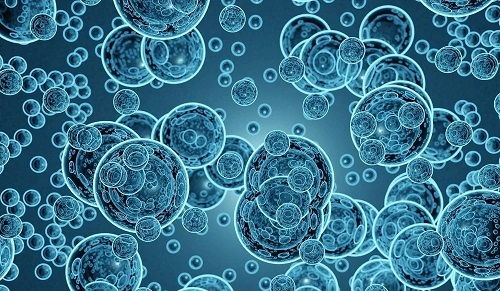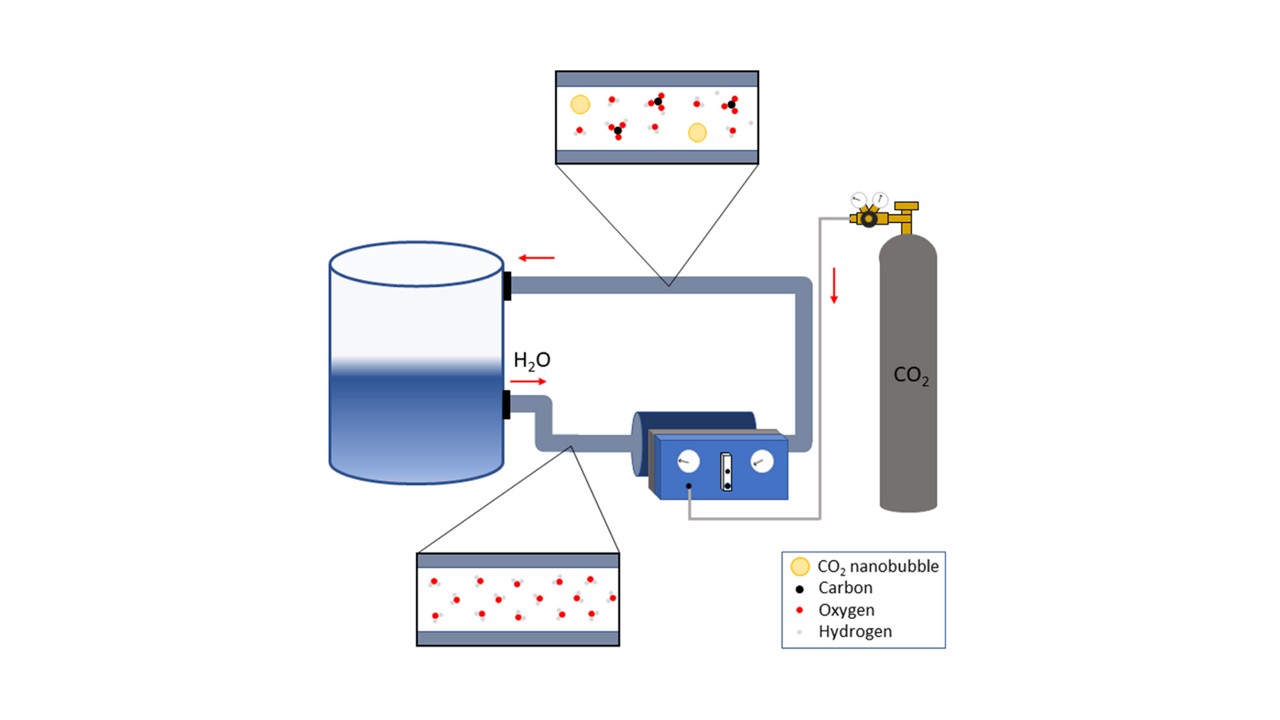Kami menggunakan cookies untuk membuat pengalaman Anda lebih baik. Untuk mematuhi petunjuk e-Pribadi yang baru, kami perlu meminta persetujuan Anda untuk menyetel cookies. Pelajari lebih lanjut .

Properties and Applications of Micro- and Nanobubbles for Concrete Crack Repair
In recent decades, nanotechnology has emerged as a key driver of innovation and sustainability, encouraging many countries to invest heavily in its development. Its potential to stimulate economic growth and enhance social welfare has made it a crucial point of national strategies.
Among the most promising developments in this field is nanobubble technology, which has gained increasing attention for its implementation across a wide range of sectors, including agriculture, medicine, industrial energy systems, wastewater treatment, food processing, and construction. Microbubbles (Mbs) and nanobubbles (Nbs) are extremely small gas bubbles suspended in a liquid medium (water).
Microbubbles typically range from 1 to 1000 micrometers in diameter, while nanobubbles normally are smaller than 1 micrometer (Tushmanlo et al., 2024). Despite their super tiny size, Mbs and Nbs are surprisingly stable and can survive in liquids for extended periods, sometimes lasting weeks or months. Their unique characteristics, such as a large interfacial surface area, long-term stability in water, and high gas transfer efficiency, make them ideal for a variety of industrial and environmental purposes.
Figure 1: Types of bubbles and the sizes adopted from. (Tushmanlo et al., 2024)
Mbs and Nbs can be produced using relatively simple and energy-efficient methods. In laboratory settings, they are often generated using bubble generators. The combination of CO₂ with water through nanobubbles forms a bicarbonate-rich environment, which offers distinct advantages.
The stability and reactivity of Mbs and Nbs depend on several factors, including bubble size, mass transfer efficiency, and bubble rising velocity. Other influential parameters include the zeta potential, hydroxyl radical, and rheological behaviour (Tushmanlo et al., 2024).
Bubble size plays a critical role in determining behavior and classification. While macro bubbles tend to rise quickly due to buoyancy and to break apart, Mbs and Nbs remain withstanding longer in liquids, allowing for extended interaction with their surroundings.
Zeta potential, which reflects the surface charge of the bubbles, is a key indicator of their stability in solution. Additionally, the generation of hydroxyl radicals and the rheological properties of the surrounding fluid further influence the behavior and effectiveness of Mbs and Nbs.
Figure 2: Illustration of CO2 nanobubbles generator. (Antonio Cerrón-Calle et al., 2022)
The use of nanobubbles can be applied in various applications and purposes (Tushmanlo et al., 2024). For instance, in the agriculture sector, Mbs-treated water enhances soil health by promoting aerobic microbial activity and eliminating harmful pathogens, which improves crop yield and quality.
In aquaculture and fisheries, Mbs and Nbs enhance fish health and growth by improving blood circulation and gill respiration, and by boosting nutrient absorption. In the medical realm, nanobubbles are used in ultrasound imaging for tumor detection and have potential applications in genetics and the treatment of severe tropical diseases such as malaria. In industrial and energy systems, Mbs provide sustainable solutions for water reuse by removing metal oxide residues.
For water purification, Mbs support microbial activity in both aerobic and anaerobic conditions, aiding in contaminant breakdown and improving aeration and water quality. Further, in food processing, Mbs are used for surface sterilization, generating hydroxyl radicals that degrade microorganisms and pesticide residues, thereby improving food safety. As eco-friendly cleaning agents, they are highly effective in hygiene-critical environments like healthcare and food preparation, eliminating the need for harsh chemicals.
In the construction industry, the use of CO₂ gas in conjunction with nanobubbles shows superior functions, especially for facilitating self-healing in cementitious materials. Under conditions involving saturated calcium hydroxide (Ca(OH)₂) solution and the injection of CO₂ Mbs or Nbs, the reaction between dissolved CO₂ and calcium ions enhances the formation of calcium carbonate (CaCO₃), effectively sealing cracks in the cement paste.
The presence of CO₂ nanobubbles also encourages the formation of vaterite, a polymorph of CaCO₃ that fills pores and microcracks more effectively than other forms of the compound, resulting in improved matrix densification and concrete durability (Choi et al., 2017) .
Figure 3 : Crack surface condition after the self-healing process. Note: CM represents Ca(OH)₂ combined with microbubbles; CN indicates Ca(OH)₂ with nanobubbles; 20 refers to the self-healing temperature in degrees Celsius (°C). (Choi et al., 2017)

Figure 4 : CCUS technology. (wellplanet.pro, Accessed 2025/05/15)
Beyond their functional advantages in self-crack healing, Mbs and Nbs technologies support environmental sustainability through integration with carbon capture, utilization, and storage (CCUS) technology. By utilizing CO₂ as a key component in the self-healing process, this approach not only improves concrete longevity but also contributes to carbon sequestration, reducing overall CO₂ emissions across the globe.
In conclusion, microbubbles and nanobubbles offer versatile, cost-effective, and environmentally friendly technology with broad applications in engineering and other fields. Their ability to enhance material performance, promote sustainability, and support green innovation makes them a valuable tool in the pursuit of more resilient and sustainable infrastructure development.
REFERENCES
- Antonio Cerrón-Calle, G., Luna Magdaleno, A., Graf, J. C., Apul, O. G., & Garcia-Segura, S. (2022). Elucidating CO2 nanobubble interfacial reactivity and impacts on water chemistry. Journal of Colloid and Interface Science, 607, 720–728. https://doi.org/10.1016/j.jcis.2021.09.033
- Choi, H., Choi, H., Inoue, M., & Sengoku, R. (2017). Control of the polymorphism of calcium carbonate produced by self-healing in the cracked part of cementitious materials. Applied Sciences (Switzerland), 7(6). https://doi.org/10.3390/app7060546
- Tushmanlo, A. S., Tushmanlo, H. S., Asadollahfardi, G., & Cici, Y. M. (2024). Applications of micro-nanobubble and its influence on concrete properties: An in-depth review. In Nanotechnology Reviews (Vol. 13, Issue 1). Walter de Gruyter GmbH. https://doi.org/10.1515/ntrev-2024-0068
- https://wellplanet.pro/2022/carbon-capture/a-speedy-history-on-carbon-capture-and-storage/. Accessed 2025/05/15
- Cover image by: Ultralocalized Optoelectronic Properties of Nanobubbles in 2D Semiconductors. Image Credit: Love Employee/Shutterstock.com
ABOUT AUTHORS
Novik Kurohman is currently pursuing a Doctor of Philosophy (Ph.D.) in Civil Engineering at Kitami Institute of Technology, Japan. His academic work centers on the development of sustainable cementitious materials, with a particular focus on the incorporation of marine-derived waste and CO₂ nanobubble technology to enhance the self-healing performance of concrete. His research integrates materials science, a sustainability approach, and microanalysis assessment to promote innovative solutions in the field of sustainable construction.
COMMENT & SHARE
Leave your comments and suggestions to improve the quality of this article in the comments section! You can also share this article with friends or relatives who are looking for related information through the sharing link on the article title.
THANK YOU FOR ACCESSING BETA INFRASTRUCTURE REVIEW



